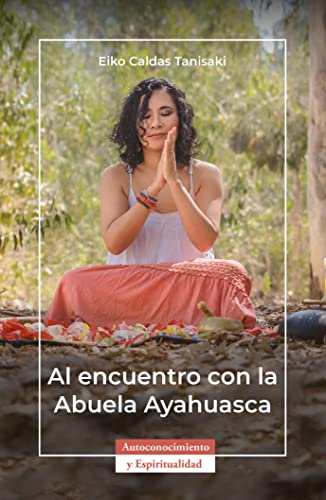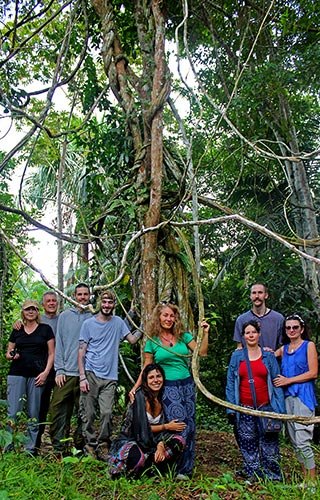Welcome to Ayahuasca Experience, your guide to cultivating transformation. In this insightful piece, we delve into the sacred journey of growing Ayahuasca, exploring the profound connection between nurturing the vine and personal healing.
Embracing the Sacred: Cultivating Ayahuasca within the Heart of Retreat Sanctuaries
The journey of ayahuasca healing is not just about the consumption of a brew; it’s about embracing a transformative experience that encompasses body, mind, and spirit. Within the heart of retreat sanctuaries, individuals are invited to step outside of their normal circumstances into a space that is conducive to deep personal growth and spiritual exploration.
These sanctuaries serve as vessels for the sacred, creating an environment where the ayahuasca plant is not only consumed but also revered. The process begins with preparation and intention-setting, which are crucial steps to ensure a meaningful and safe experience. Participants are often encouraged to engage in various cleansing practices, such as fasting or meditating, before partaking in an ayahuasca ceremony, to clear both their bodies and minds.
During the ceremony, a shaman or experienced facilitator guides participants through their journey, providing a sense of security and direction. The power of communal experiences in these retreats cannot be overstated, as sharing the voyage with others often leads to profound connections and a sense of shared humanity.
Retreat centers also focus on integrating the experience once the immediate effects of the plant have subsided. Integration may include group discussions, individual reflections, and other therapeutic activities that help individuals make sense of their visions and insights. This is a critical component of the healing process, as it allows for the growth that occurred during the ceremony to take root in daily life.
Moreover, cultivating ayahuasca within the heart of retreat sanctuaries involves a deep respect for the indigenous traditions from which this medicine originates. Many retreats emphasize the importance of understanding the cultural context of ayahuasca and promote sustainability and ethical sourcing of the plant.
Ultimately, ayahuasca retreats are not just about the ingestion of a psychedelic substance; they are places where the spiritual, emotional, and physical healing can occur within a supportive and sacred community setting. It is here that many find clarity, release from past traumas, and a renewed sense of purpose.
Terence McKenna – Ayahuasca Stories
I Worked at an Ayahuasca Retreat: What I WISH Someone Told Me…
How can I cultivate ayahuasca seeds?
Cultivating ayahuasca seeds can be a profound and respectful way to connect with this traditional medicine, often used within the context of healing and spiritual retreats. However, it is crucial to approach this with a deep respect for the cultural and ecological significance of the plant, as well as the legal considerations in your region.
Here are the steps to cultivate ayahuasca from seeds:
1. Legal Considerations: Before you begin, ensure that cultivating ayahuasca (Banisteriopsis caapi) is legal in your area. Ayahuasca is considered a controlled substance in many countries.
2. Sourcing Quality Seeds: Obtain high-quality seeds from a reputable source. It’s important that they are fresh, as older seeds can have decreased germination rates.
3. Germination Environment: Ayahuasca vines are native to the Amazon rainforest, so they require a warm, humid environment to germinate. The ideal temperature is between 25°C to 30°C (77°F to 86°F), with high humidity.
4. Soil Preparation: Prepare a pot with well-draining soil mixed with some sand and organic matter. Ayahuasca prefers slightly acidic to neutral pH levels.
5. Planting the Seeds: Plant the seeds about 1 cm (0.4 inches) deep in the soil. You can place them in small pots or directly in larger ones if you wish to avoid transplanting them later.
6. Watering: Water the seeds lightly but regularly to maintain moist soil. Do not overwater, as this can lead to fungal growth and seed rot.
7. Germination Period: It can take anywhere from 2-8 weeks for ayahuasca seeds to germinate. Patience is key, as the seeds take time to awaken from dormancy.
8. Care After Germination: Once the seedlings emerge, continue to keep the environment humid. A humidity dome or regular misting can help.
9. Lighting: Provide bright, indirect light. Direct sunlight can be too intense for young plants.
10. Transplanting: When the seedlings are strong enough, transplant them to larger pots or to the ground if the climate is suitable. Ensure the spot mimics the plant’s natural environment—shady, humid, and warm.
11. Support for Growth: As a vine, ayahuasca will need support to climb on. Install a trellis or provide other structures for the vine to entwine.
12. Ongoing Care: Protect the plants from pests and diseases. Use natural pest control methods to maintain an organic cultivation.
13. Harvesting: It typically takes several years before ayahuasca vines are mature enough to be harvested for ceremonial use. Always harvest responsibly, ensuring the sustainability of the plants.
Throughout the process of cultivating ayahuasca, integrating intention and respect for the plant’s spiritual importance is essential, especially when growing for purposes associated with retreats and healing practices. This plant is more than just a botanical specimen; it is a sacrament in many indigenous cultures, and its use should honor those traditions and the plant’s role within them.
How can you propagate ayahuasca?
When we talk about propagating ayahuasca in the context of Ayahuasca Retreat and Healing, we are not referring to the physical cultivation of the ayahuasca plant but rather spreading awareness and understanding of the ritual and its potential benefits. Here are some key ways in which knowledge and practices associated with ayahuasca can be expanded:
1. Educational Content: Create informative articles, blog posts, videos, and social media content that explain what ayahuasca is, its history, cultural significance, and how it is used in healing retreats.
2. Personal Testimonials: Share personal stories and testimonials from individuals who have had transformative experiences at ayahuasca retreats, emphasizing the healing and personal growth aspects.
3. Collaborations: Partner with experienced shamans, healers, and indigenous communities to facilitate authentic conversations and create content that respects the traditional roots of ayahuasca.
4. Workshops and Talks: Host workshops, webinars, or talks about ayahuasca, its use in therapeutic contexts, and integrative practices post-retreat for continued healing and self-improvement.
5. Safety and Ethics: Provide clear guidance on the safety protocols, ethical considerations, and respect for the sacred nature of the plant and its traditional use.
6. Research and Studies: Highlight and support scientific research and studies that investigate the effects of ayahuasca on mental health, spiritual well-being, and psychological healing.
7. Cultural Exchange Programs: Organize cultural exchange programs that allow interested individuals to learn directly from indigenous communities about ayahuasca and its role in their spiritual and medicinal practices.
Remember, it’s essential to approach this propagation with utmost respect for the indigenous cultures that have stewarded ayahuasca for centuries and to avoid commoditizing what is a sacred practice for many.
Where does Banisteriopsis caapi grow?
Banisteriopsis caapi, a key ingredient in the traditional Ayahuasca brew, is native to the Amazon Basin. This vine thrives in the tropical rainforests of South America, particularly in countries such as Brazil, Peru, Colombia, Ecuador, and Venezuela.
The cultivation and natural habitat of Banisteriopsis caapi are integral to the mystical and healing experiences sought at Ayahuasca Retreats. The plant’s growth conditions—rich, moist soil and the warm, humid environment of the jungle—reflect the deep connection between the healing properties of Ayahuasca and the earth where it grows.
For individuals seeking healing and spiritual growth through Ayahuasca Retreats, the understanding of where Banisteriopsis caapi originates is often viewed as a component of respecting and connecting with the traditional and cultural roots of this ancient plant medicine.
In which countries does ayahuasca grow?
Ayahuasca traditionally grows in the Amazon basin, which spans several countries in South America. The key constituents of Ayahuasca, which are the vine Banisteriopsis caapi and various DMT-containing plants like Psychotria viridis, are native to this region.
The countries where Ayahuasca naturally grows include:
- Brazil: The vast rainforests offer a rich habitat for Ayahuasca vines and DMT-containing plants.
- Peru: Considered by many as the heartland of Ayahuasca, with numerous retreat centers dedicated to its ceremonial use.
- Colombia: Home to various indigenous tribes that have used Ayahuasca in their spiritual and healing practices.
- Ecuador: Features diverse ecosystems where the Ayahuasca vine can be found in the wild.
- Bolivia: Though less known, it also hosts areas of the Amazon where traditional Ayahuasca plants grow.
In addition to these countries, Ayahuasca has been cultivated in other tropical parts of the world outside of the Amazon basin due to growing interest in its use for spiritual and therapeutic purposes. It’s important to note that the legal status of Ayahuasca varies by country, and it remains a controlled or prohibited substance in many parts of the world.
Frequent Questions
What are the essential conditions required for growing ayahuasca plants at a healing retreat?
The essential conditions required for growing ayahuasca plants at a healing retreat include a tropical climate, with consistent warmth and high humidity. The soil should be rich and well-draining, mimicking the natural soil composition of the Amazon. Regular rainfall or watering is necessary to maintain the moist conditions that ayahuasca (Banisteriopsis caapi) requires. Additionally, appropriate shading is needed as ayahuasca grows naturally under the canopy of other trees, hence it thrives in dappled sunlight rather than direct exposure. Lastly, ensure there is a practice of sustainable cultivation to support both the healing retreat needs and environmental conservation.
How does the cultivation of ayahuasca within a retreat setting contribute to the overall healing experience for participants?
The cultivation of ayahuasca within a retreat setting contributes to the overall healing experience for participants by fostering a deeper connection to the source of the medicine, ensuring the sustainability and ethical sourcing of the plants, and providing an immersive environment that supports intentionality and respect for the sacred traditions surrounding its use.
What sustainable practices can be implemented in growing ayahuasca to ensure the plant’s longevity and spiritual potency for healing ceremonies?
Sustainable practices for growing ayahuasca that ensure both the plant’s longevity and its spiritual potency include using ethical cultivation methods such as permaculture techniques, which mimic natural ecosystems and improve soil health. Implementing crop rotation and polyculture can prevent nutrient depletion and disease build-up. It’s also crucial to support local indigenous communities who have traditional knowledge and a vested interest in the plant’s sustainability. Moreover, engaging in reforestation efforts and seed sharing programs helps maintain genetic diversity, which is key to resilience against climate change and other environmental stressors. These practices honor the sacred nature of ayahuasca and promote healing by ensuring the plant thrives for future ceremonies.
In conclusion, the journey of growing Ayahuasca is as transformative as the plant itself. Whether engaging in an Ayahuasca retreat or partaking in the healing ceremonies, it is imperative to recognize the sacredness of the plant and the responsibility we carry in its cultivation. The process mirrors the inner growth and healing that participants seek. It requires patience, care, and a deep connection to nature. The act of nurturing Ayahuasca, from seed to vine, amplifies the respect for the traditions and the indigenous cultures that have safeguarded this powerful medicine for centuries.
For those undertaking the healing path with Ayahuasca, let this growth process serve as a reminder of the preciousness of life and the interconnectedness of all beings. May the efforts put into the growth of Ayahuasca reinforce the importance of sustainability and ethical practices in all aspects of these sacred retreats. Remember, the plants we cultivate hold the mirrors to our souls, reflecting back the care we invest in them. As we tend to the vines, may we also tend to the gardens within ourselves with as much love and attention.
Let us move forward with reverence for the Earth’s wisdom and an unwavering commitment to the betterment of human consciousness. In nurturing Ayahuasca, we also nurture the seeds of transformation in each individual, ultimately contributing to a more healed and harmonious world.






